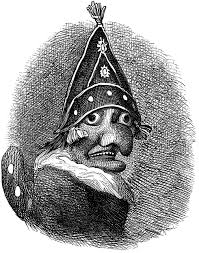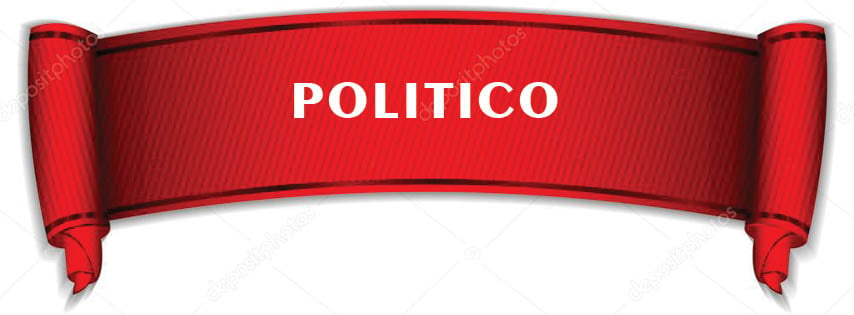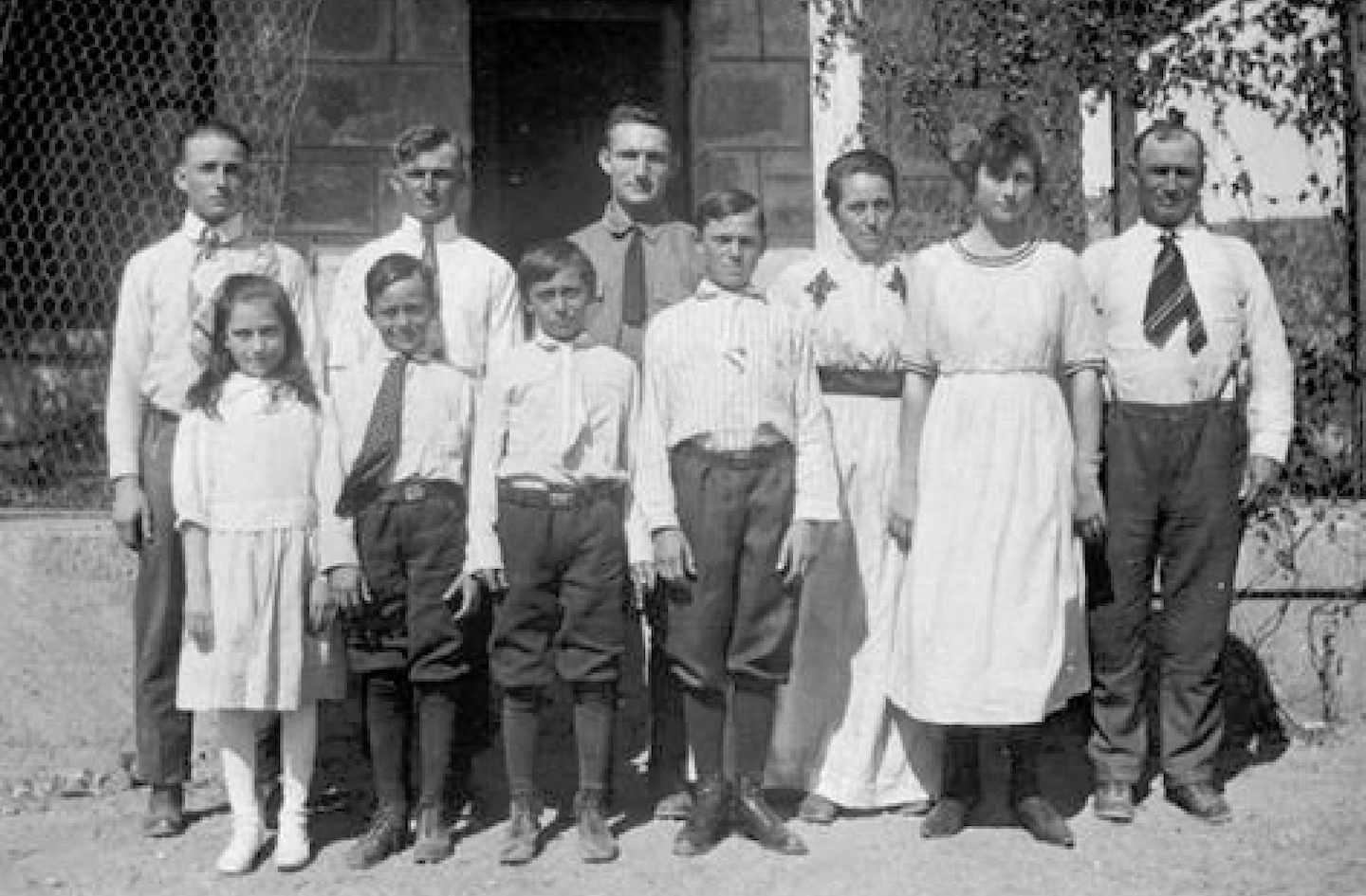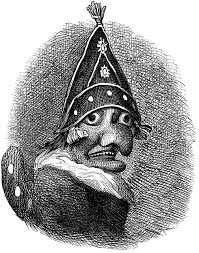U.S. Surgeon General Vivek Murthy is calling on Congress to require a health warning on all alcoholic bottles, labels and beverages which will alert consumers to the link between alcohol consumption and the risk of cancer.
The U.S. Surgeon General confirms that "alcohol is the third leading preventable cause of cancer behind tobacco and obesity,” and has released a new advisory detailing how drinking alcohol increases the risk of developing seven types of cancer. Dr. Vivek Murthy explains:
Just to put this in perspective — alcohol consumption is among the leading causes of breast, colorectal, esophagus, liver, mouth, throat and voice box cancer — and responsible for 20,000 cancer deaths, and 100,000 new cases of cancer in the United States each year.
Though labels at present warn against drinking during pregnancy, and drinking while operating a car or heavy machinery, the Surgeon General is asking Congress for an update to include a third warning, perhaps the most pervasive risk of them all.
While the 1964 Surgeon General’s warning about tobacco triggered schools, parents and community leaders to create awareness campaigns around the use of cigarette smoking, the tobacco industry initially responded by undermining the report's findings and promoting public trust in tobacco products.
After Jeffrey Wigand, a former vice president of research and development at Brown & Williamson, revealed on 60 Minutes that the cigarette manufacturer had manipulated its tobacco blend with chemicals like ammonia to enhance nicotine’s addictive quality, The World Health Organization’s Framework Convention of Tobacco Control (FCTC), a legally binding international treaty to regulate tobacco products, stepped in with recommendations to restrict public official’s interactions with the tobacco industry. A quarter century later, there are still approximately 1.2 billion tobacco users globally; which cause 7 million preventable deaths annually worldwide, according to the WHO.
Originally shot in black and white, ethereal wisps of smoke came to convey a whisper of romance, power, and mystery on the silent screen. It was the Golden Age of Hollywood where the burgeoning U.S. Tobacco and Bootlegging industries strategically placed their products in the hands of Hollywood royalty; where 66% of all films glamorized the illegal use of alcohol, tobacco and intoxication; sensationalizing what society then considered the 'scourge of society' on the silver screen. “William G. Bonelli wasn’t rich,” wrote to the Los Angeles Times, accusing the California politician of soliciting millions in bribes during the Prohibition Era. “He was filthy rich.”
Though Prohibition did prohibit the production, transportation and sale of alcoholic beverages in the United States from 1920-1933 — there were exceptions. The State of California was issuing approximately 10,000 liquor licenses per year under a proviso for “medicinal and sacramental purposes.”
Speakeasies, as it happens, were flourishing during Hollywood’s Golden Era. "The Back Room" at the Hollywood Masonic Temple, and "The Frolic Room" at Hollywood's Roosevelt Hotel, were among hundreds of establishments selling alcohol during the Prohibition era in Hollywood. Each and all shared a dotted line to William G. Bonelli.
The Los Angeles Mirror writes. “Bonelli displayed incredible laxity in freely handing out liquor licenses to racketeers and political cronies for $525 each, who in turn resold them at the going rate of $6,500 to speakeasies, who then kicked backed annuities to Bonelli.” The series of articles in the Los Angeles Times, Mirror and Examiner led to a sensational $10 million annual liquor license pay-off scandal and grand jury investigation.
Forget the politician was indicted in 1939; fled to Mexico to avoid arrest, or even that he died a fugitive in a foreign land, all according to Wikipedia. He was, in fact, still in his post and advocating for statewide "dim-outs" in the Los Angeles Examiner's 1 December 1942 edition. Syncing a public curfew on liquor sales to U.S. Military Personnel Bonelli said, “If in the judgment of the Army and Navy this is a way to further the war effort, then it's a reasonable sacrifice for the liquor industry and public to make, too."
However, cooperating with Leo Katcher’s “Billion Dollar Blackjack: The Story of Corruption and the Los Angeles Times” in 1954 is as textbook an advocate, insider, or whistleblower as they come.
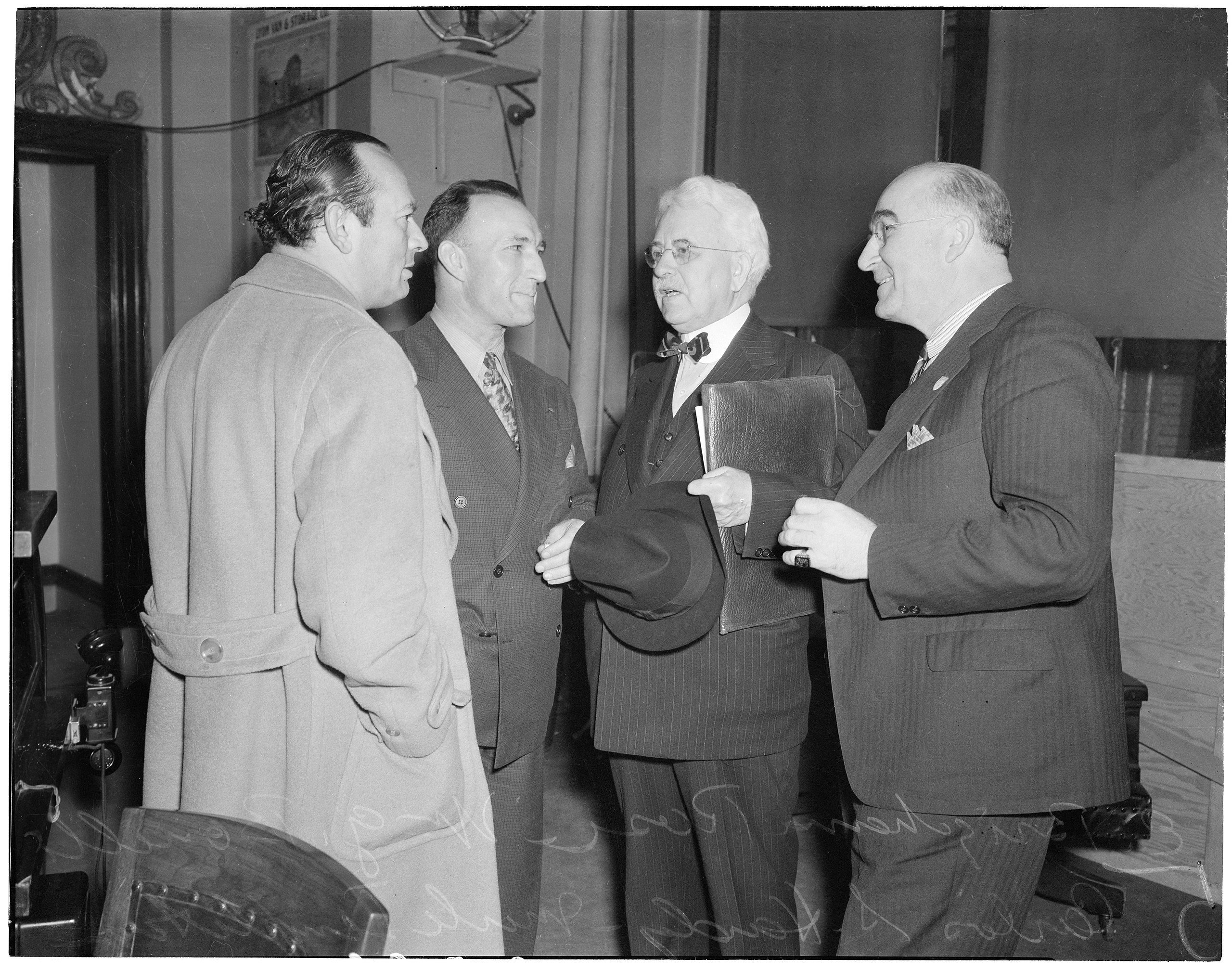
Bonelli (second from left) at trial with others 1939.
Though he failed to substantiate his libel suits with the LA Times and Mirror, what he left behind was a rather infamous reputation as California’s “Liquor Czar.” Using Bonelli’s own words, Katcher opened with the first indictment of fake news in the 20th century:
Like a Captain’s Tower at First and Spring Streets in Los Angeles, there sits today the third in line of financial and political kings who have ruled Southern California for almost three quarters of a century. He's a shadow man, virtually unknown to the six million people whose government and livelihoods are shaped by his desires.
Forget that FB and X aren’t fact checking posts anymore, the new and improved “Community Notes” now taking their place, this was the first direct accusation by a government insider with exculpatory evidence linking the owners of the Los Angeles Times and the Los Angeles Police Department to king-making, union busting, subverting laws, violating civil rights, and in Bonelli’s own words: "aligning class against class, race against race, in an attempt to make bigger profits for themselves.”
An alumnus of the prestigious University of Southern California; lettering in varsity tennis, football and basketball; serving as a pilot in World War I; claiming a seat in the Los Angeles City Council; subsequently the California State Assembly; and commandeering the State Board of Equalization ensured that at 5 feet 8 inches tall only Big Bill Bonelli coming in at 190 pounds had full and complete authority over California’s liquor licensure during and following the Prohibition era. When Bonelli, 32, was named President of the Los Angeles City Council District, his inaugural address began, “Let us use our efforts to prevent the LAPD from being swayed from its duty by outside control.”
The 21st Amendment to the Constitution was ratified in December 1933, whereupon President Franklin D. Roosevelt proclaimed the end of Prohibition. The 21st Amendment gave states and local governments the responsibility for regulating alcohol, and after nearly a century here's where the nation’s habit stands today. According to the National Institute of Alcohol Abuse and Alcoholism:
The national annual per capita consumption level of 2.51 gallons of ethanol equates to every person aged 14 or older consuming an average of 535.5 standard drinks per year.
If Prohibition was driven by a combination of social, economic and religious factors, Bonelli understood the politics. His father, George Bonelli, and his ancestors had effectively settled Kingman, Arizona: operating commercial real estate at the epicenter of a 250,000 acre ranch. A Temperance Movement — linking alcohol with domestic violence, poverty, illness and crime — grew out of these rural areas; drawing the attention of politicians to regulate the nation’s behavior and protect the American Way.
Like his father, Bill Bonelli’s ranch, stadium, movie studio and rodeo come speedway in California drew record crowds to his innovative Bonelli Tracts. The Santa Clarita Valley was an outpost when he began developing the infrastructure of suburban sprawl some 36 miles north of Los Angeles. Today, over a quarter million people reside in what the LA Times rather ironically confirms is amongst the “Best Places to Live in the U.S.”
Of note. While serving as President of the Los Angeles City Council, and later California State Assembly, Bonelli somehow found time to moonlight as an Associate Professor of Political Science at Occidental College. Flanked by the most prestigious liberal arts colleges in the United States, Bonelli’s contribution to Oxy’s politics major was the curriculum’s combination of rigorous in-classroom work combined with community-based, experiential learning opportunities.
Under Bonelli, political science majors at Oxy received internships through the Center for Community Based Learning (CCBL); which provided human services for the Indigenous Peoples’ in Los Angeles County. Herewith, his biographer Leo Katcher speculates as to why.
There was an innovative passive air-conditioning system built into Bonelli’s childhood home. A cupola, conducting warm air up and out of the rooftop, was in its day an engineering novelty, but the decorative twenty-four panes of glass framing a four point arched roof was designed as a lookout.
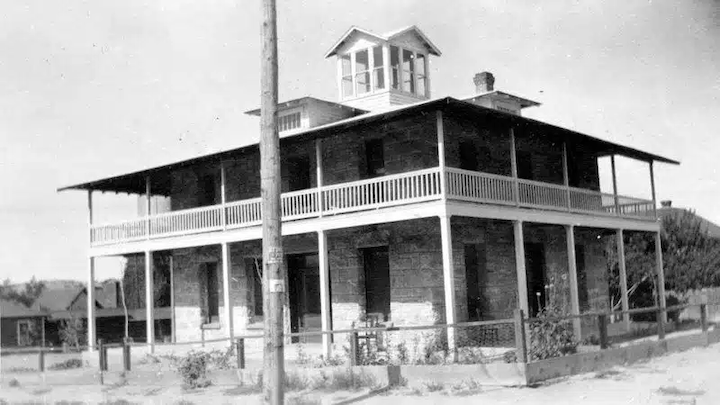
Bonelli House circa 1915.
At the dawn of the 20th century, the Bonelli boys would climb the stairs to their “Captain’s Tower” at Bonelli House and play Blackjack. It was a crow’s nest whereby they could see all they surveyed; somewhere beyond Mohave’s county seat or a township they purveyed; onto surrounding sovereign nations and American Hualapai for whom Bill, and brother Frank, cooked for and befriended in the Gilded Age.
That the Indigenous Peoples’ were dying from historical trauma — at 11% the national average from alcohol consumption — belies the gains the world has made by 2025. According to the World Health Organization (WHO), around 2.6 million people die from alcohol consumption each year via injuries, alcohol poisoning, cardiovascular conditions, mental health problems, and now, apparently, cancer.
That we drink to induce euphoria or reduce anxiety implies a choice: double down, or choose a path to renewal. Somewhere beyond the Mohave's lime rock light, we believe Bonelli saw and chose the road less taken.




